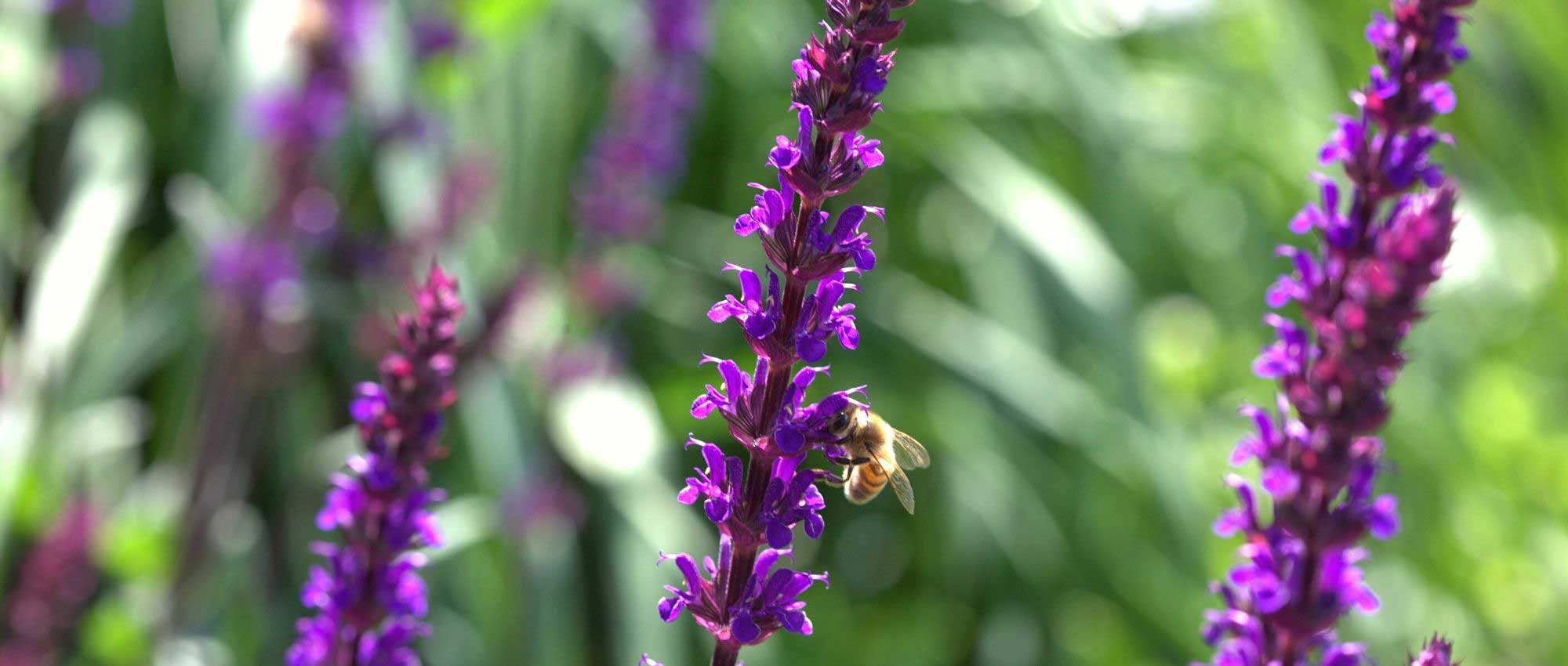
10 plants with flower spikes: the most beautiful varieties
Discover our selection
Contents
Plants with spike flowers are ideal for bringing verticality to borders! From a botany perspective, flowers are attached directly to the flowering stem, without a peduncle… unlike inflorescences in clusters, where flowers are connected to the stem by a peduncle. The latter can be very short, so it is sometimes difficult to distinguish spikes from clusters, although spikes are often a little denser and narrower. For clarity, this page also includes plants that form compact clusters, as the visual effect is very similar! These plants have a graphic, structured style. They fit easily into modern gardens or exotic-style gardens (Kniphofia, Verbascum, Eremurus…). They are structural plants that offer truly impressive flowering, sometimes very tall! In the garden, we recommend varying flowering forms: combine spike flowers with umbels, heads, solitary flowers… This will let you play with contrasts in shape.
Liatris
Also called Kansas plume, Liatris is a perennial native to the United States and which produces in summer, from July to September, very straight, upright flower spikes, most often purple-pink, sometimes white. A distinctive plant, still too rarely seen in gardens! Inflorescences are dense and made up of very small flowers with a feathery appearance, creating a very striking effect. It reaches between 70 cm and 1.50 m in height depending on variety, and bears fine, linear leaves resembling those of grasses. Liatris is a plant that likes heat and sun. Plant it in full sun, in light soil that nevertheless remains fresh. You can plant it near a pond, but soil must be well drained to avoid excess moisture.
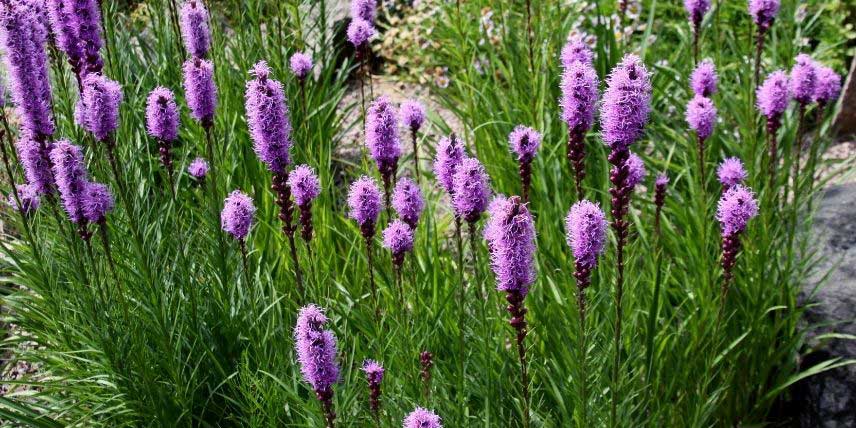
Dense spike inflorescences, resembling small feathery tufts, of Liatris spicata (photo Drew Avery)
→ Also discover our full fact sheet on the Liatris
Kniphofia
Native to South and East Africa, Kniphofia, also called Tritoma or devil’s poker, is a splendid perennial with warm flowering. It flowers from June to October and bears spikes of yellow, red or orange flowers. Flowers are tubular and somewhat resemble those of aloes. They open from base of spike upwards and generally change colour as they open: thus inflorescences often display a beautiful gradient of yellow and orange hues. Flowers at base often become paler once open. Kniphofia grows between 50 cm and 1.20 m in height and bears long, narrow leaves. It thrives in full sun, in well-drained soil, and does not tolerate heavy, waterlogged soils. Regarding hardiness, it generally tolerates between −10 °C and −15 °C. Kniphofia is prized for its very exotic appearance! Perfect for accompanying crocosmias, castor oil plants, agapanthuses, euphorbias, yuccas, phormiums…
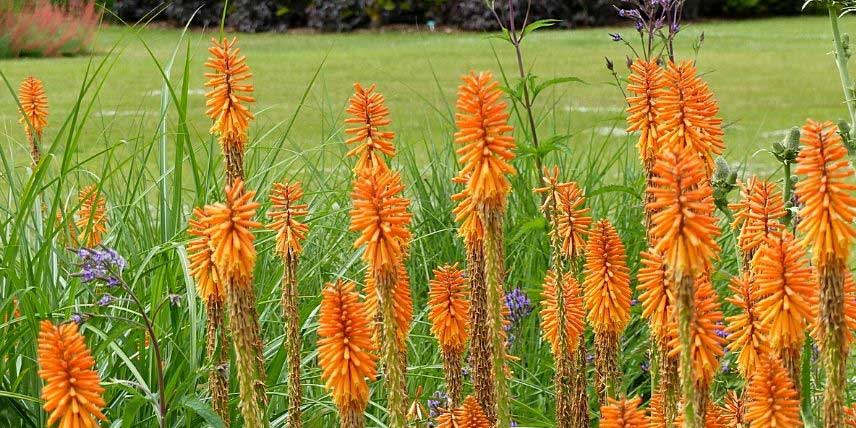
Kniphofia ‘Fiery Fred’ offers orange spikes with a very exotic look!
→ Discover also our complete fact sheet on Kniphofia
Discover other Perennials A to Z
View all →Available in 1 sizes
Available in 0 sizes
Available in 0 sizes
Available in 0 sizes
Available in 1 sizes
Available in 1 sizes
Available in 1 sizes
Available in 1 sizes
Available in 1 sizes
Available in 1 sizes
Veronica spicata
Spike veronica is a perennial that flowers in summer, from June to August, and bears long floral spikes made up of small flowers. Depending on variety, flowers can be white, pink or blue. They are melliferous. Inflorescences are actually dense clusters that resemble spikes. Veronica forms compact, ramified clumps, and reaches between 30 cm and 60 cm in height. Plant in full sun, in well-draining soil, even stony and rather dry. It is very hardy and particularly suited to mountain gardens. Feel free to plant at the base of roses. Also ideal in a perennial border, alongside sages, nepetas, Sidalcea, monardas, Stipa and lavenders…
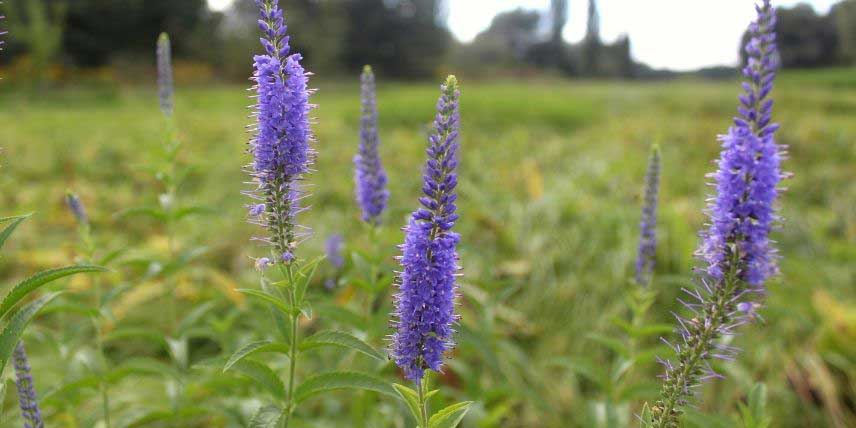
Delicate flowering of spike veronica, Veronica spicata (photo Vojtěch Dostál)
→ Also discover our full fact sheet on Veronica
Veronicastrum
Veronicastrums are perennial plants fairly close to veronicas, but larger and more vigorous. The most widely cultivated is Veronicastrum virginicum, native to North America. It bears long, slender erect spikes, made up of small flowers with a feathery, very light appearance. They come in very delicate shades, ranging from white, pink, mauve to purple. They are melliferous and attract pollinating insects that feed on their nectar. When in flower, Veronicastrums can reach up to 2 metres in height. They prefer soils that remain cool to moist, and can be planted at pond edges, for example alongside meadowsweet, Ligularia, Liatris spicata, Astilbes…
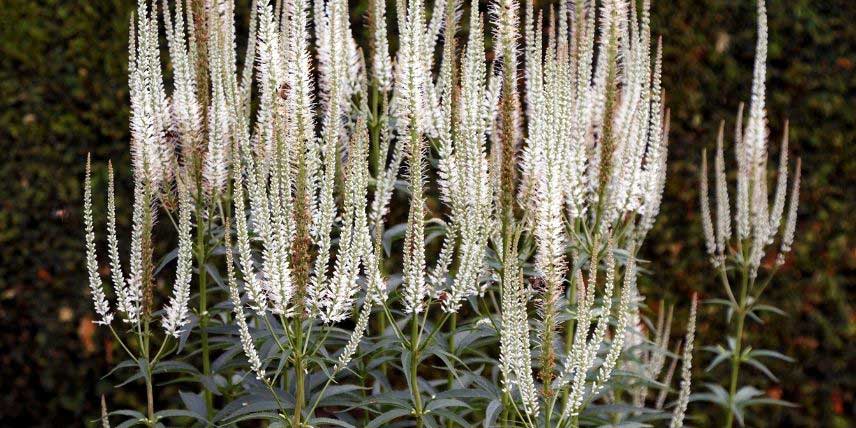
Veronicastrum virginicum ‘Album’ produces flowers in long, erect, ramified spikes (photo Acabashi)
→ Discover our full profile on Veronicastrum and Olivier and Mickaël’s video about Veronicastrum ‘Fascination’
Agastache
Agastache is a beautiful aromatic perennial that flowers in summer. It is a very easy-to-grow plant that requires almost no maintenance. Ideal for natural-style gardens. Its flowers are melliferous and attract pollinating insects. Its scented, aromatic foliage is appreciated. Agastache foeniculum, for example, is used in cooking and gives off a pleasant aniseed aroma, which has earned it the common name anise hyssop. It is as valued for its flavour as for its ornamental qualities! The ‘Golden Jubilee’ variety stands out for its beautiful golden, very luminous foliage! Plant agastache preferably in full sun, or possibly in partial shade. It prefers rich, cool soils, and Agastache rugosa also adapts to clay soils. You can also grow agastache in a pot.
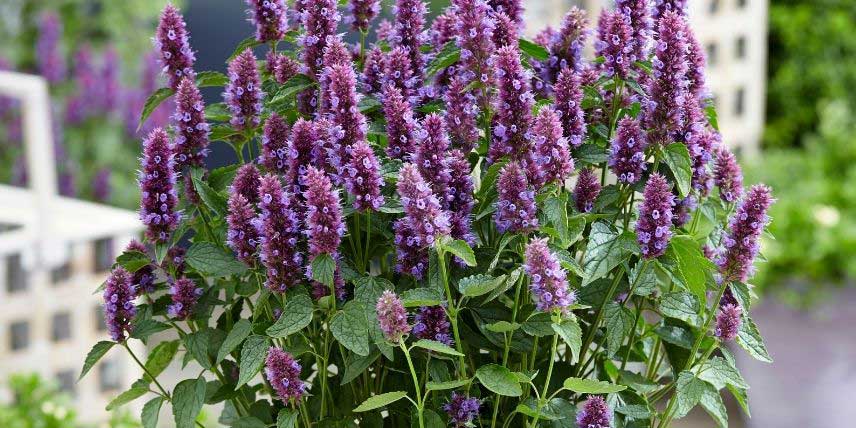
Flowering of Agastache ‘Beelicious Purple’
→ Also discover our comprehensive fact sheet on Agastache
Verbascum
Verbascum, or mullein, is a perennial plant that produces in summer a beautiful flowering in the form of erect spikes, made up of flowers usually yellow, sometimes white, orange, mauve or pink. There is even a variety with blue flowers (Verbascum ‘Blue Lagoon’)! Verbascum flowers throughout summer, from June through August or September. It has a very upright habit, with a thick, very straight flowering stem. Generally flowers open successively from base of spike upwards. It is a very good melliferous plant, attracting bees and hoverflies. It also bears very beautiful leaves, large and downy, sometimes silvery. The smallest varieties measure 30 cm in height, while the largest reach up to 2 m! It prefers full sun and well-drained, rather poor and dry soil. Perfect in Mediterranean-style gardens, or in rockeries!
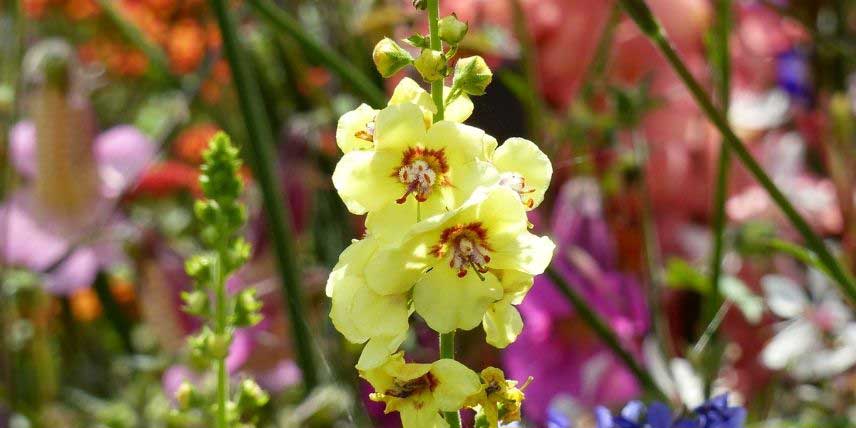
Verbascum ‘Costowld Queen’ offers very bright flowering!
→ Also discover our complete fact sheet on the Verbascum
Eremurus
Originating from Central Asia, Eremurus, nicknamed foxtail lily, is an impressive perennial that flowers in late spring or early summer (between May and July). It produces large, very long flowering stems, which can reach 2 m high in Eremurus robustus! They are not spikes but rather clusters: the flowers are indeed attached to the stem by a peduncle. Depending on the variety, they can be white, yellow or orange. Eremurus develops from a bulb, formed at the centre by a bud, surrounded by fleshy roots that look like tentacles! This is a plant that needs heat: it thrives in full sun, in perfectly drained soil. If moisture stagnates, the bulb may rot over winter.
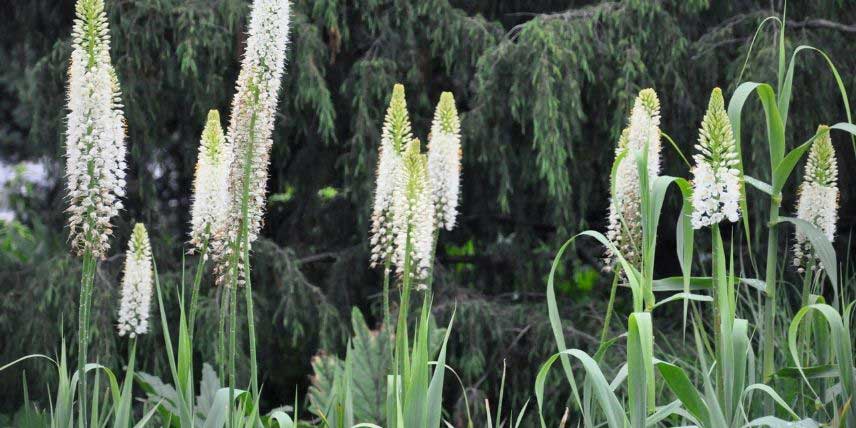
Eremurus himalaicus offers an impressive and very striking flowering display!
→ Also discover our complete fact sheet on Eremurus
Lupin
Lupin is a beautiful member of the Fabaceae, emblematic of English and romantic gardens! Its very natural style is much admired. It produces floral spikes in vivid colours, which, depending on variety, declinate into blue, yellow, pink, red and white… Its flowering is impressive and easily creates a focal point in a border! Plant preferably in full sun, possibly in partial shade, in ordinary, well-drained soil, but not calcareous. It is a short-lived perennial, rarely lasting more than 4 to 5 years in the garden, but tends to self-seed.
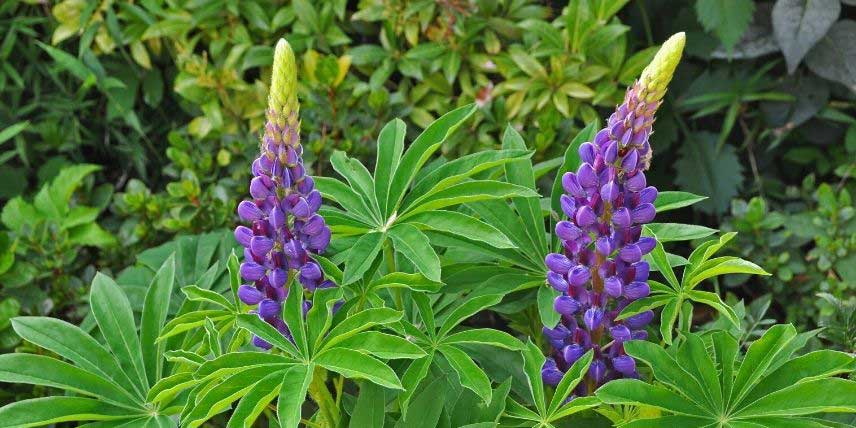
Lupin offers spikes of papilionaceous flowers (photo Marc Ryckaert)
→ Also discover our complete fact sheet on the Lupin
Salvia nemorosa
Woodland sage, or Salvia nemorosa, is a very floriferous perennial that forms fairly dense spikes made up of blue, white, mauve or pink flowers. It flowers throughout summer, from June to September. Its flowers are melliferous and attract butterflies, which come to feed on nectar. It typically grows 40 to 60 cm tall. It is easy to grow, fully hardy and content with ordinary soil, provided there is no excess moisture in winter. It prefers full sun but can also be planted in partial shade. Salvia nemorosa is perfect at base of roses or alongside hardy geraniums, alchemilla, perovskia, penstemons and grasses. We particularly recommend varieties Salvia nemorosa ‘Caradonna’ and ‘Schneehügel’. They will easily find a place in mixed-borders, English gardens, cottage gardens or romantic-style gardens.
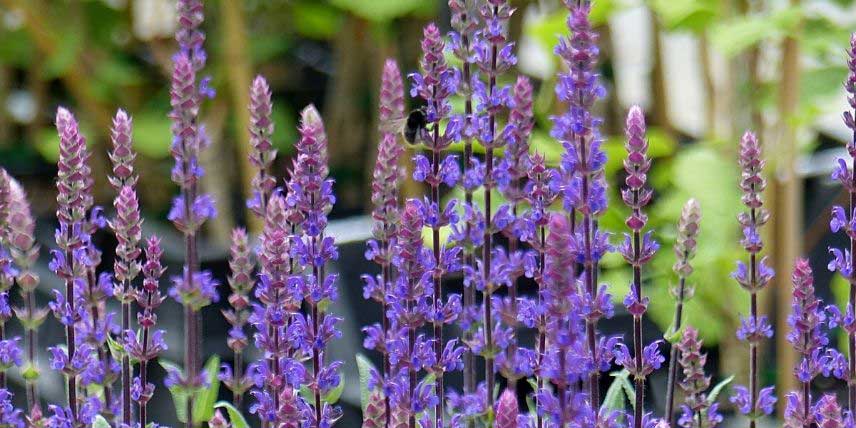
Flower spikes of Salvia nemorosa ‘Caradonna’
Physostegia
Physostegia is a superb perennial for fresh ground with a very natural habit, native to North America. It is unfortunately far too rarely grown in gardens! It flowers in mid-summer, from July to September, and then bears spikes 10 to 12 cm long made up of small flowers. Depending on varieties, flowers are white or come in beautiful shades of pink. Physostegia’s flowering is delicate and very elegant! Surprising fact: when flowers are touched, they shift and do not return to their original position. Physostegia grows rapidly. It develops from a rhizomatous crown and tends to spread over time! Plant it in sun, in fresh to moist soil. Feel free to situate it on pond margins. We also recommend planting it sheltered from strong winds, as these may break the stems. Allow enough space around it, as it tends to spread. You can plant it on pond edges with meadowsweet, loosestrifes, purple loosestrife, Liatris spicata, Eupatoriums…
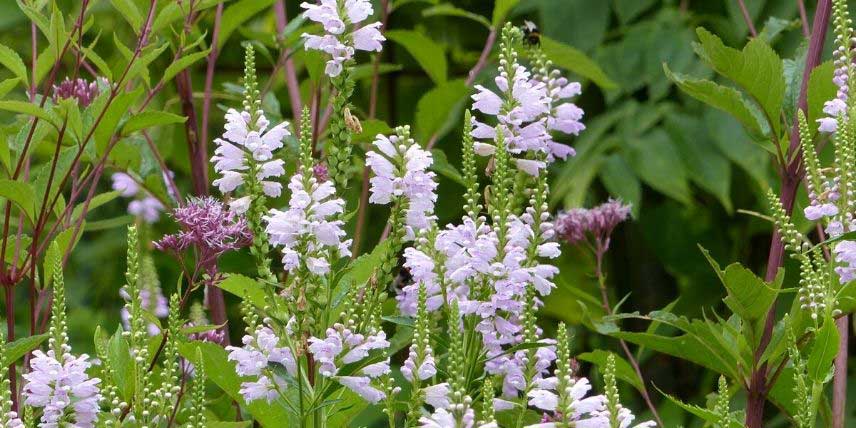
Physostegia virginiana ‘Rosea’ produces small, very striking spikes composed of soft pink flowers
→ Also discover our full page on Physostegia
- Subscribe!
- Contents
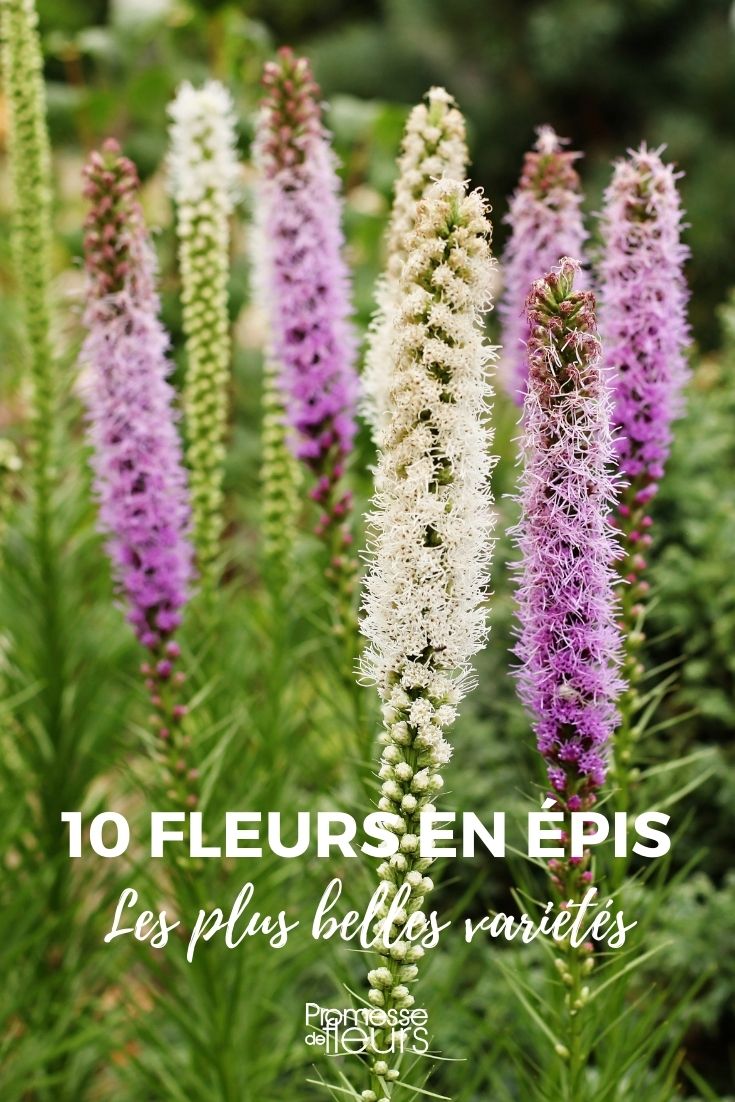































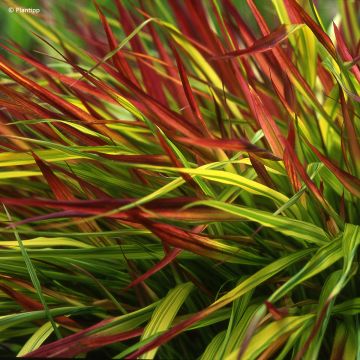
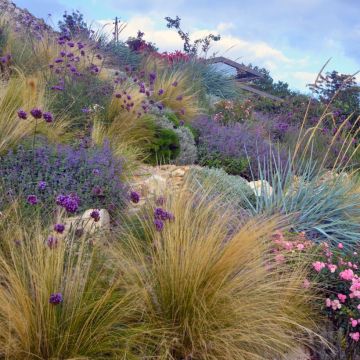
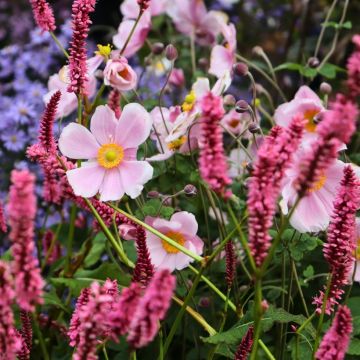

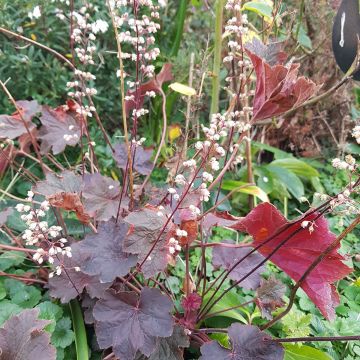
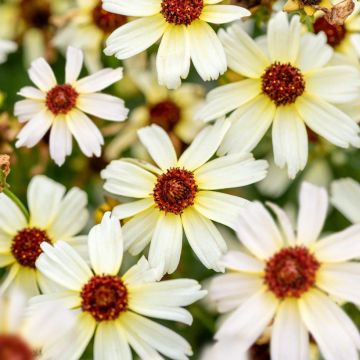
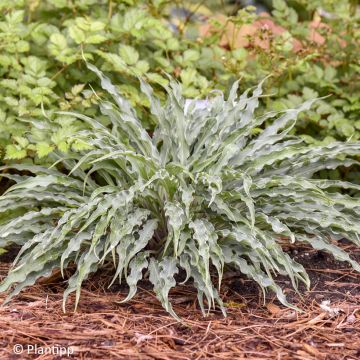
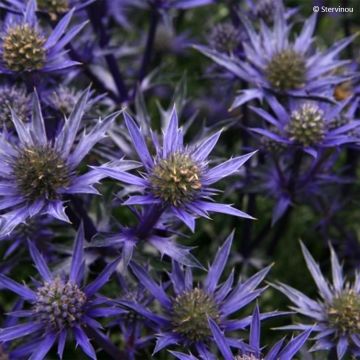
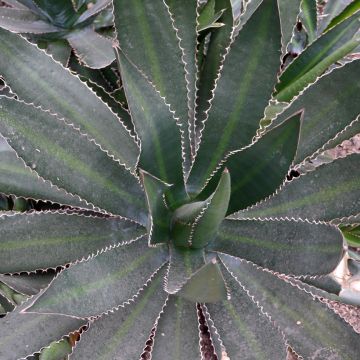

Comments